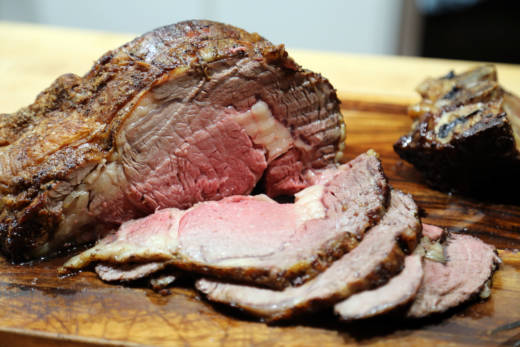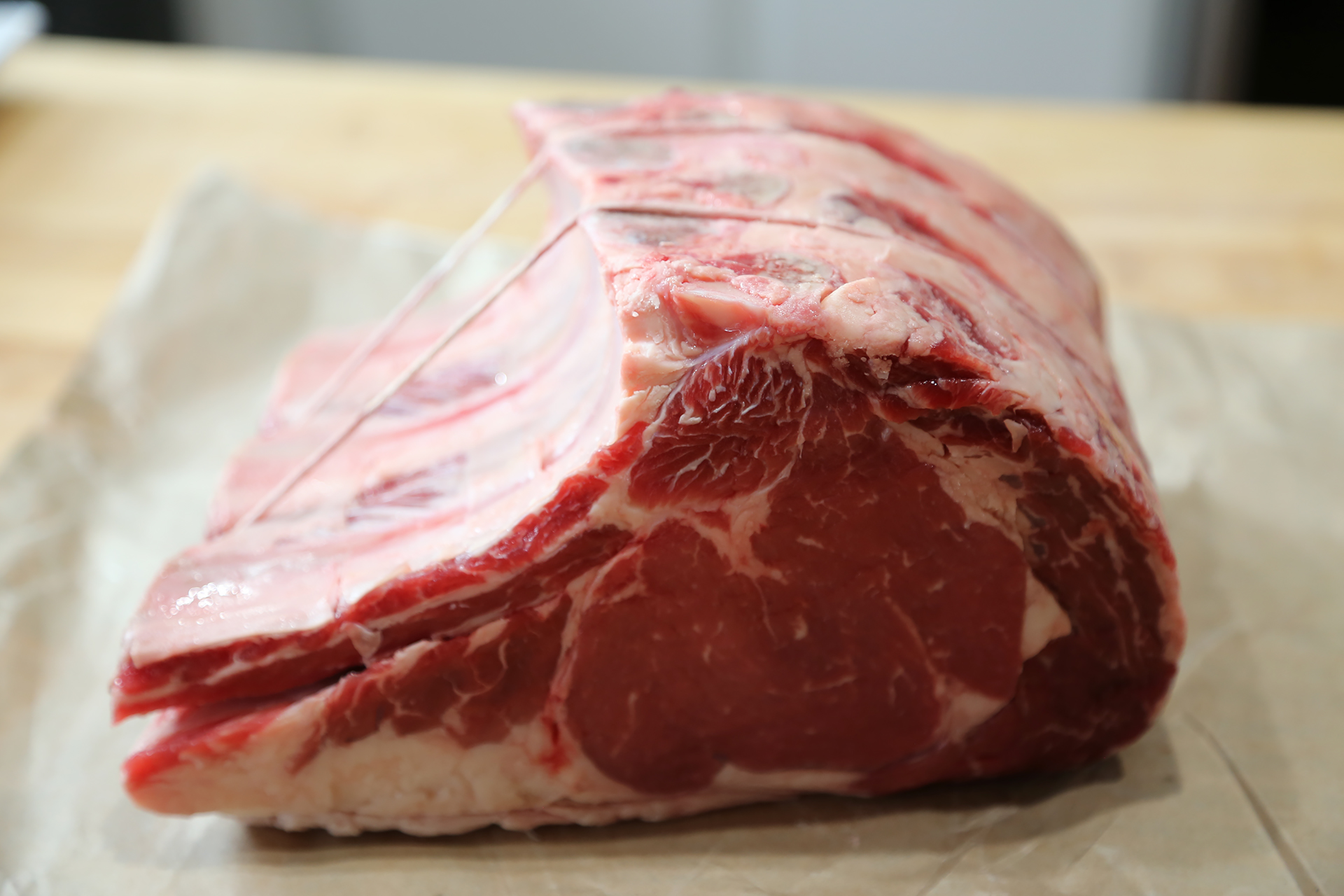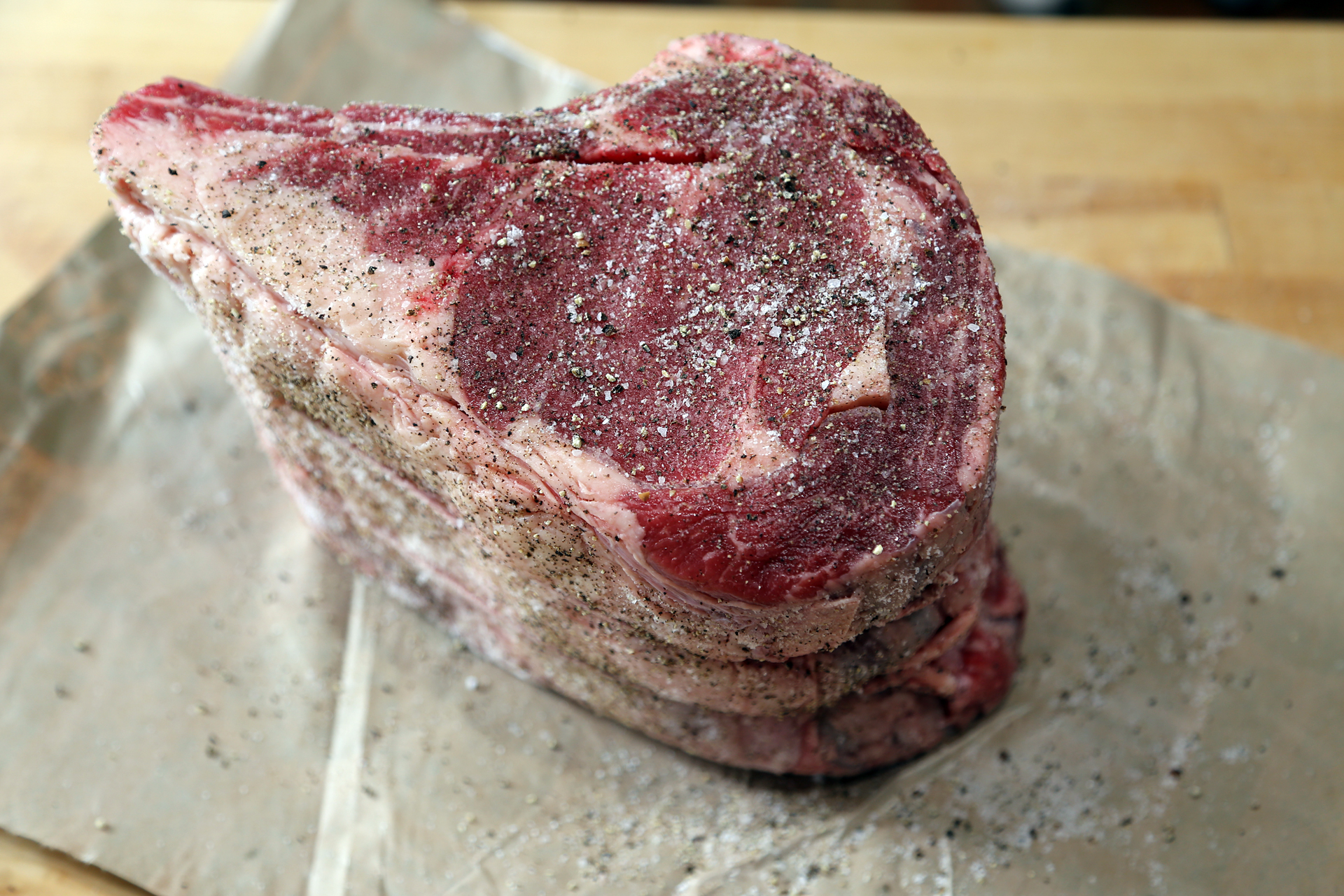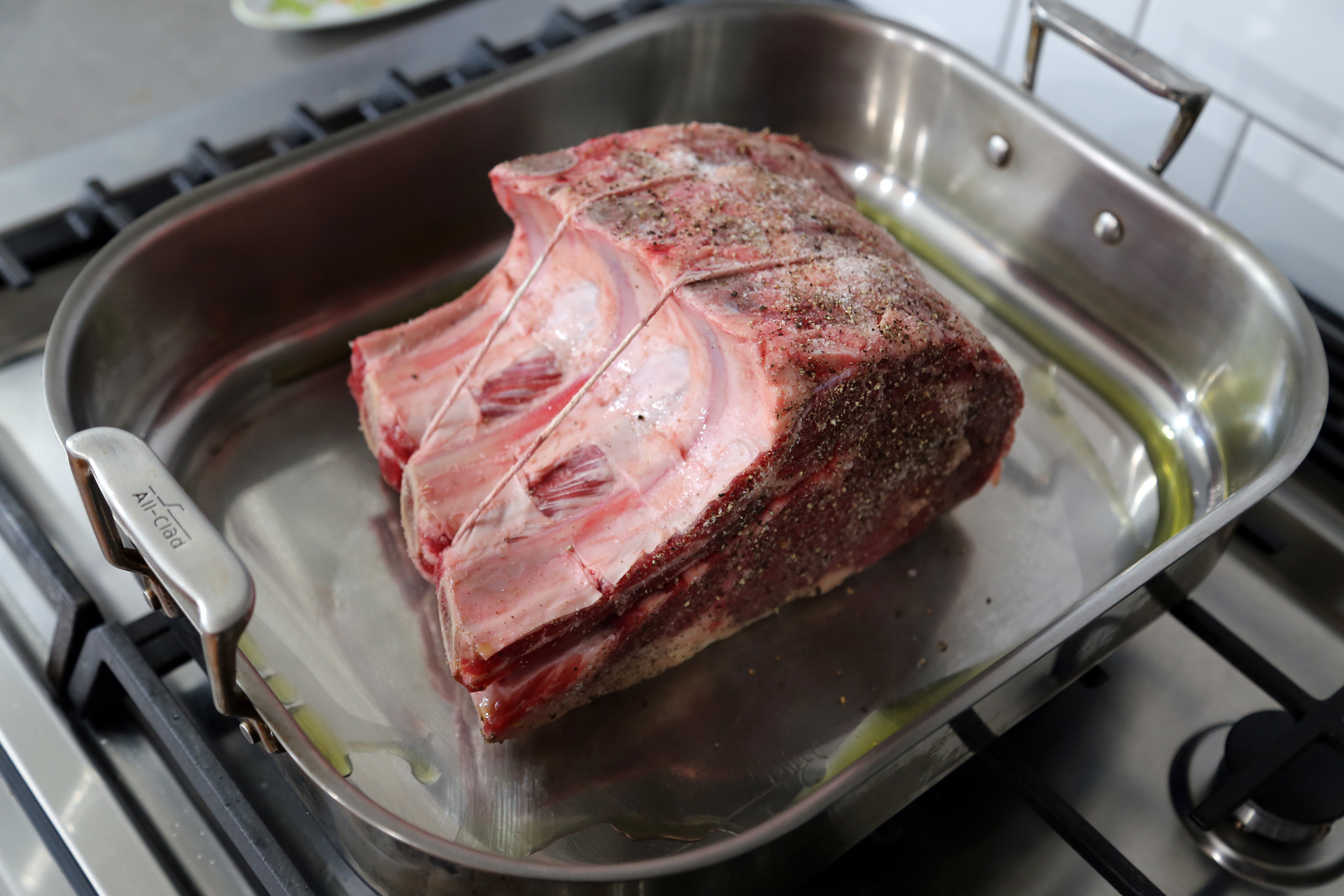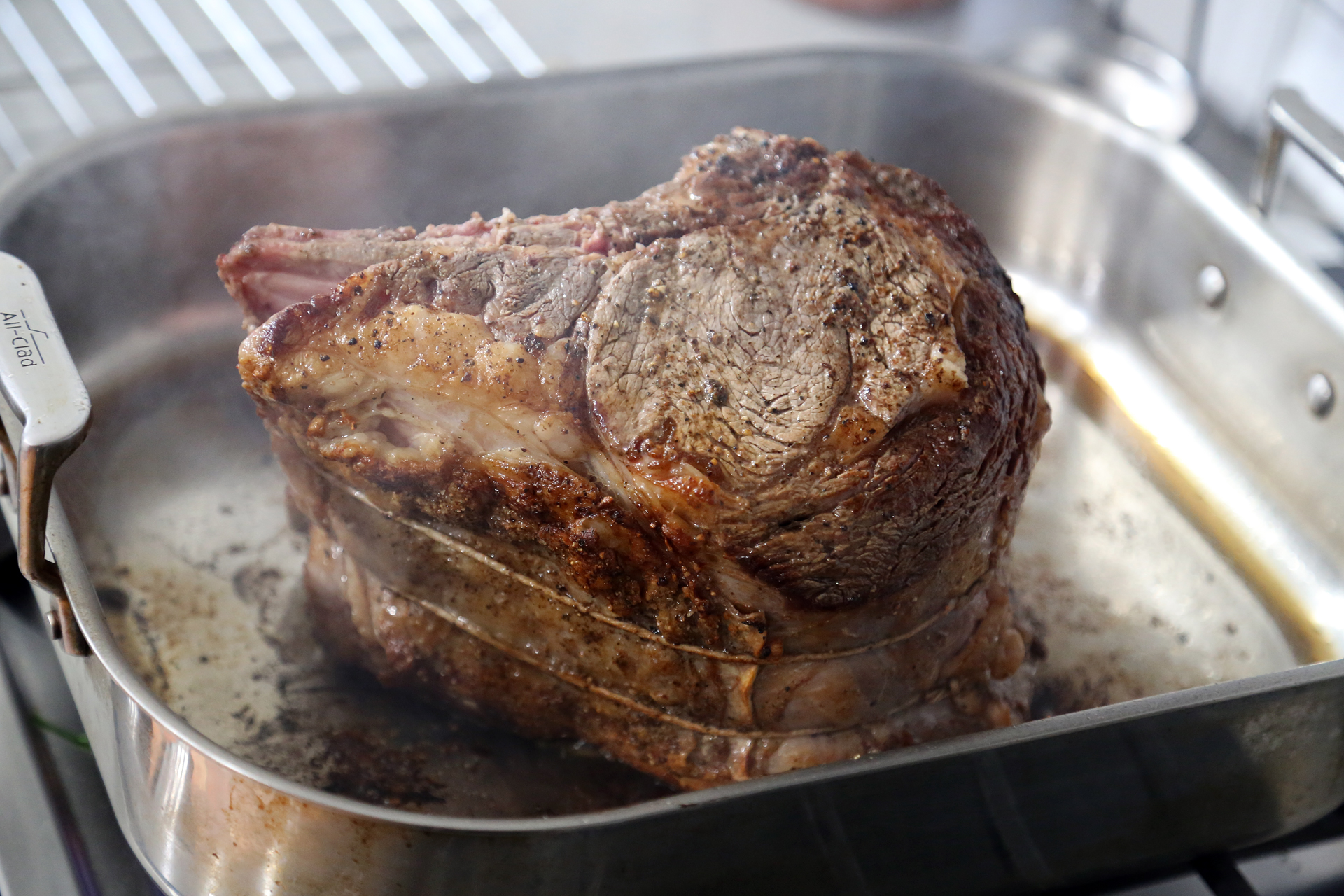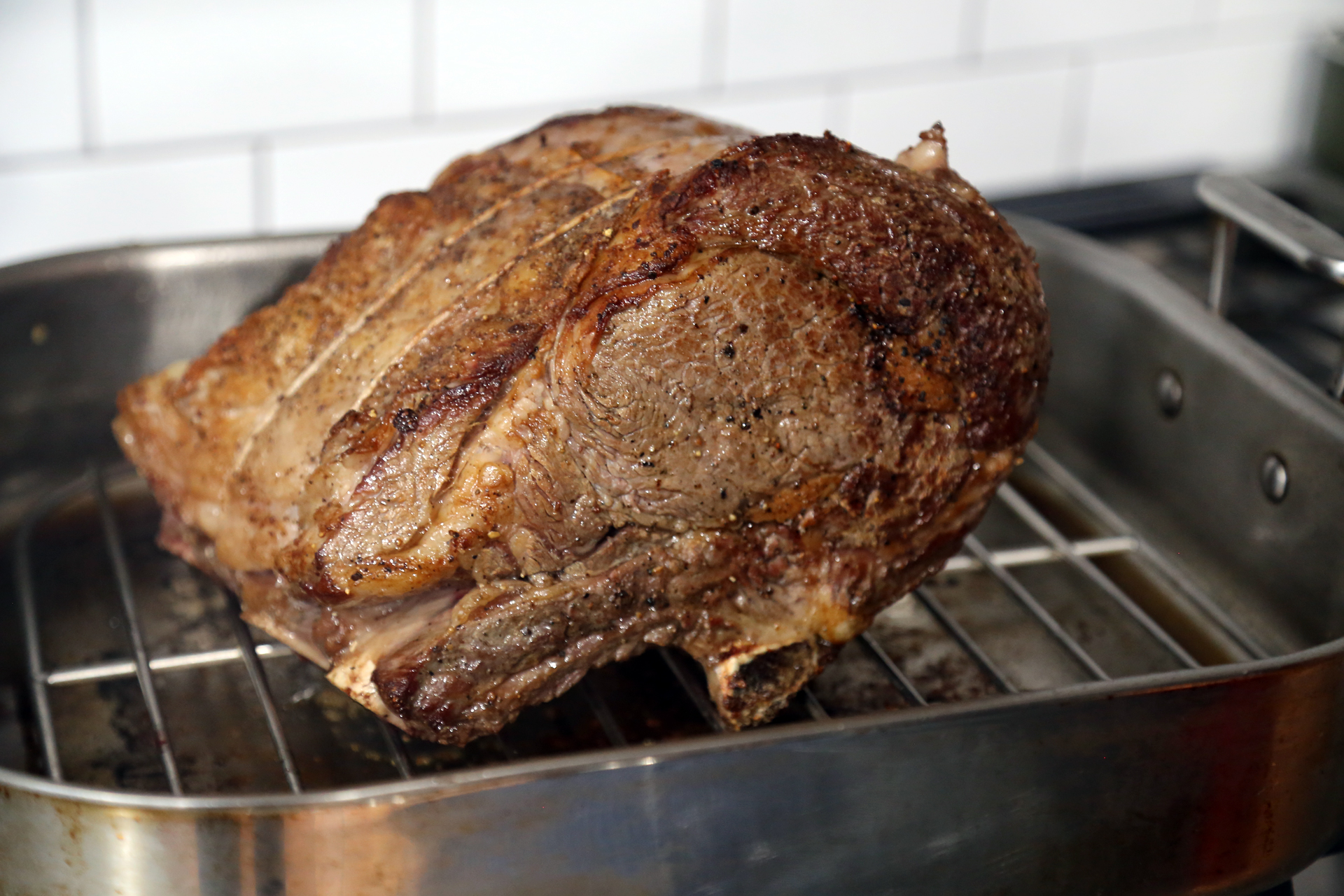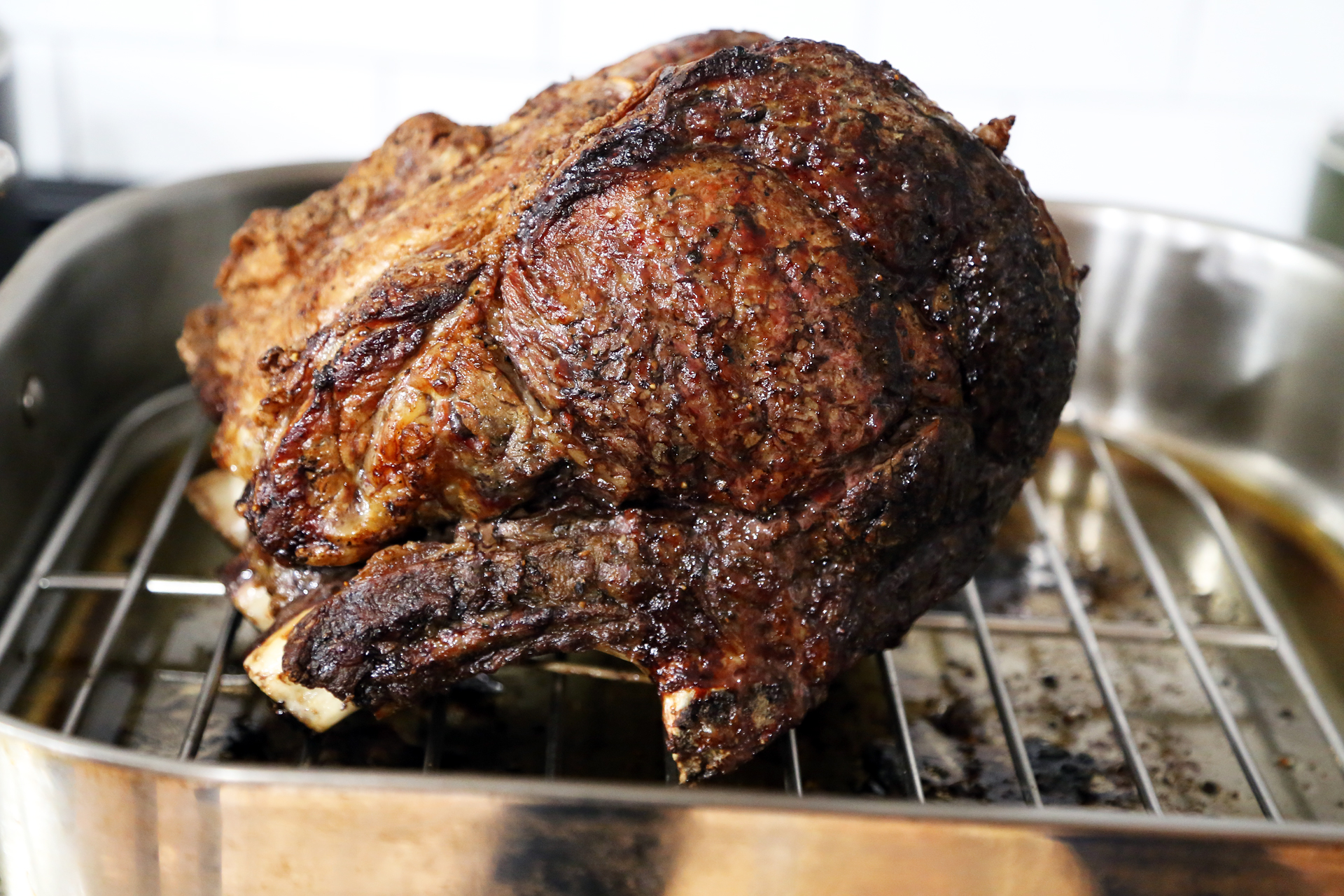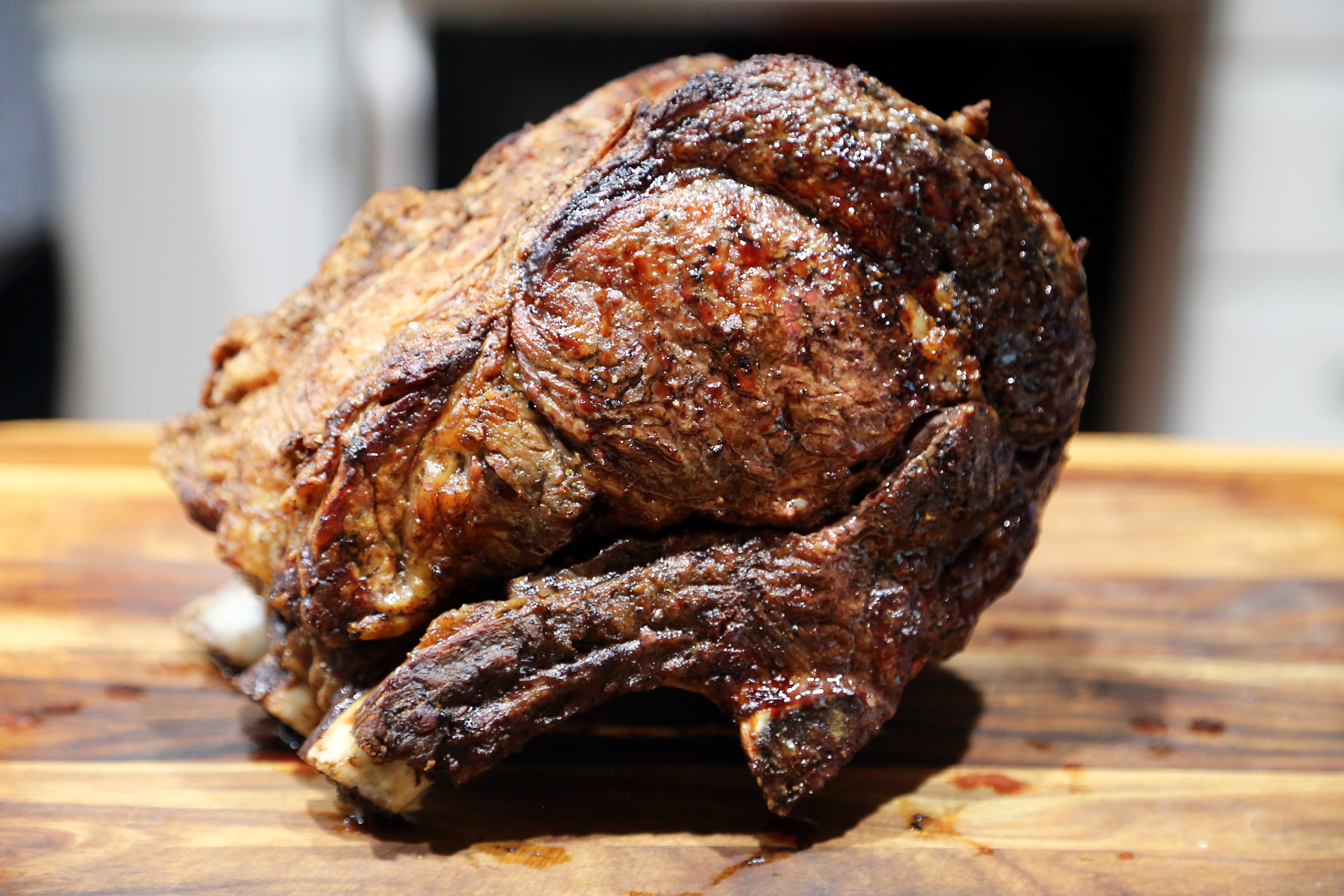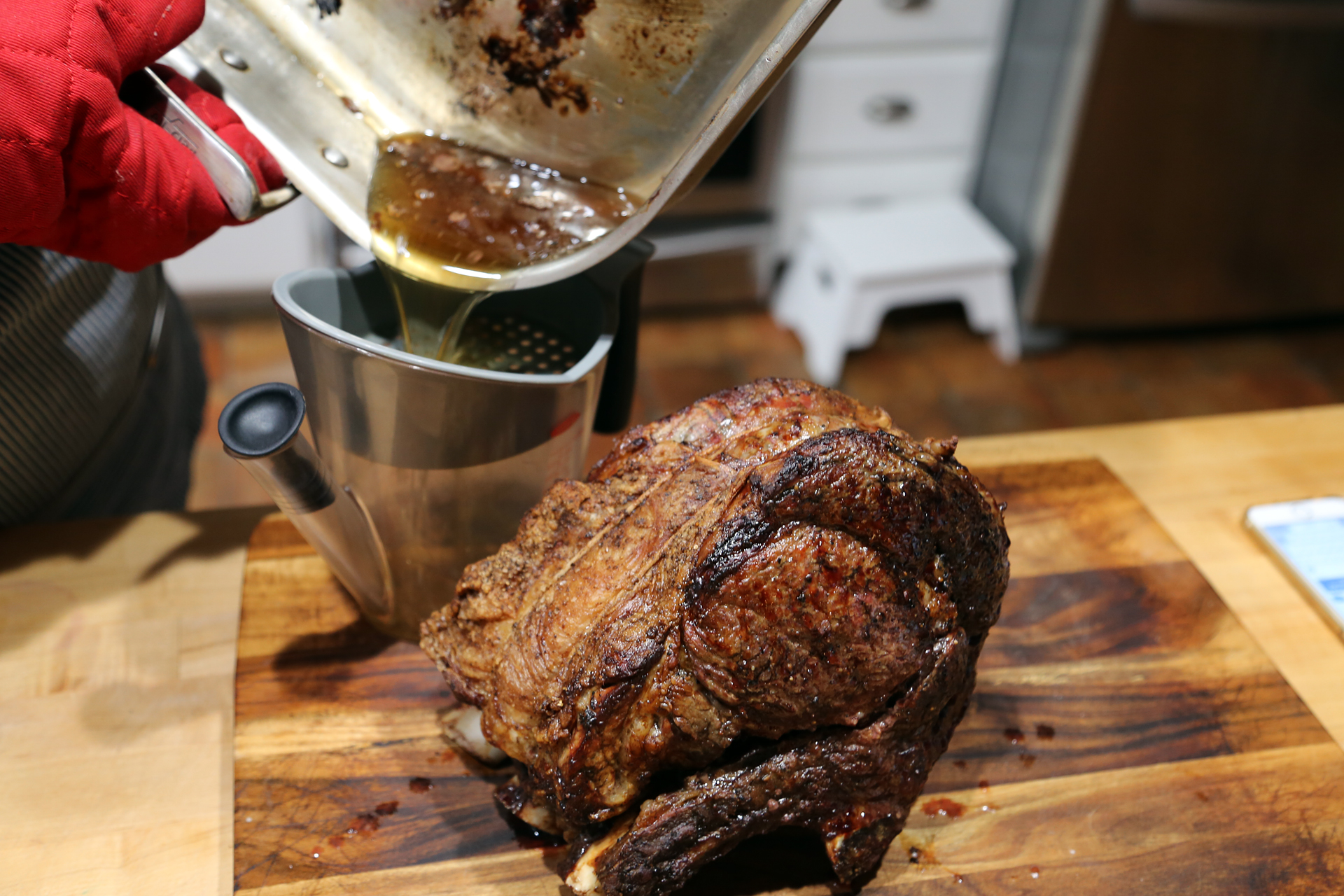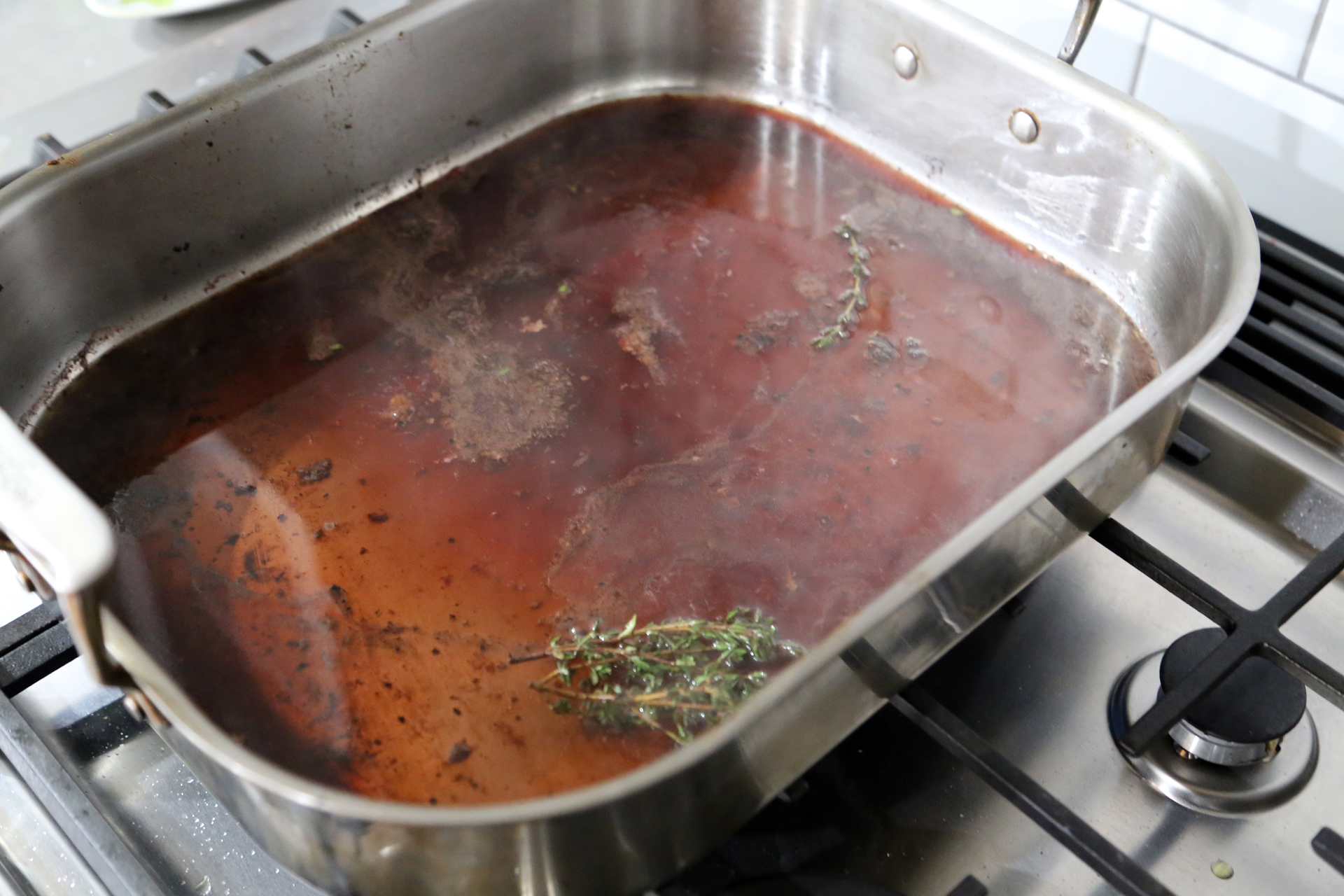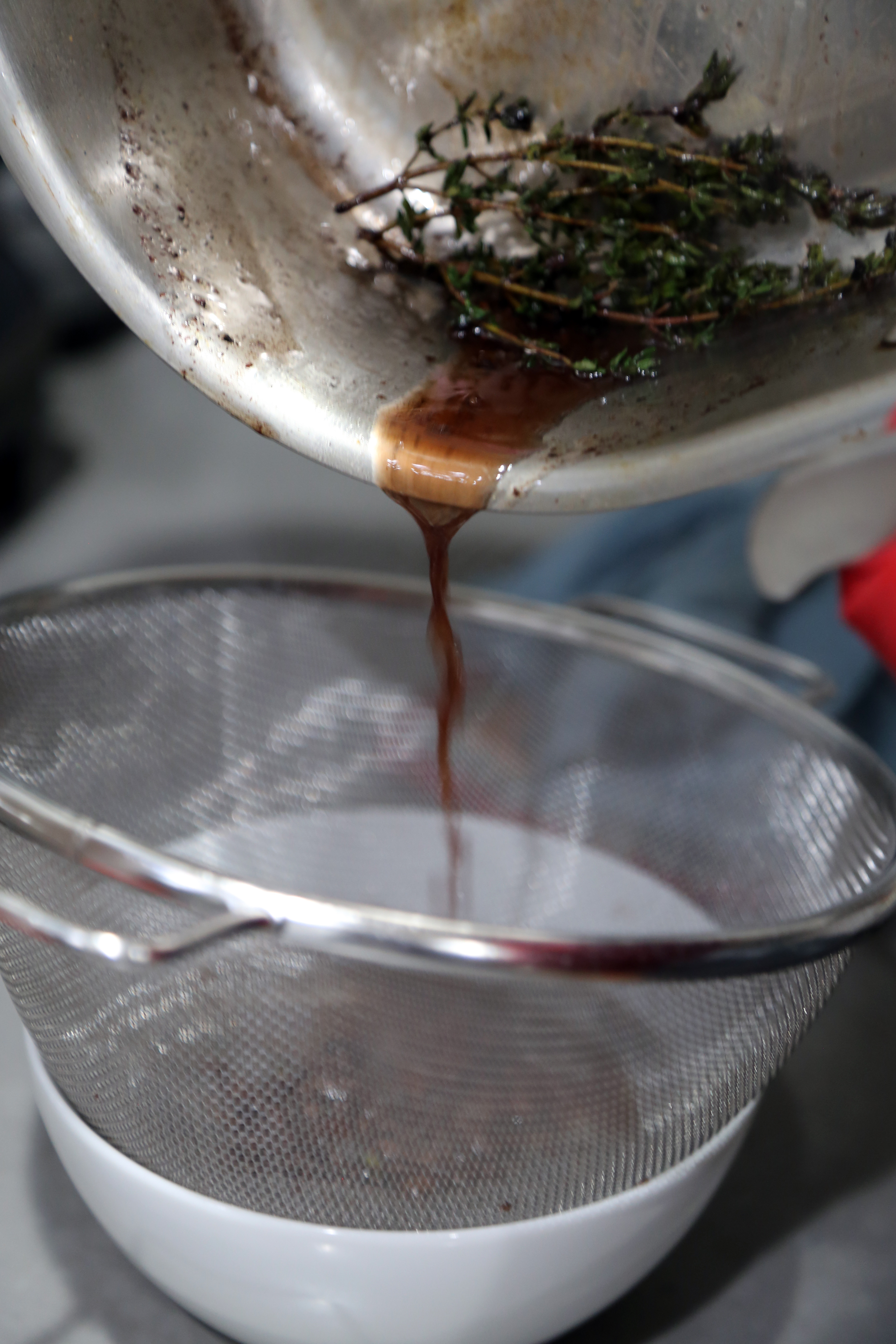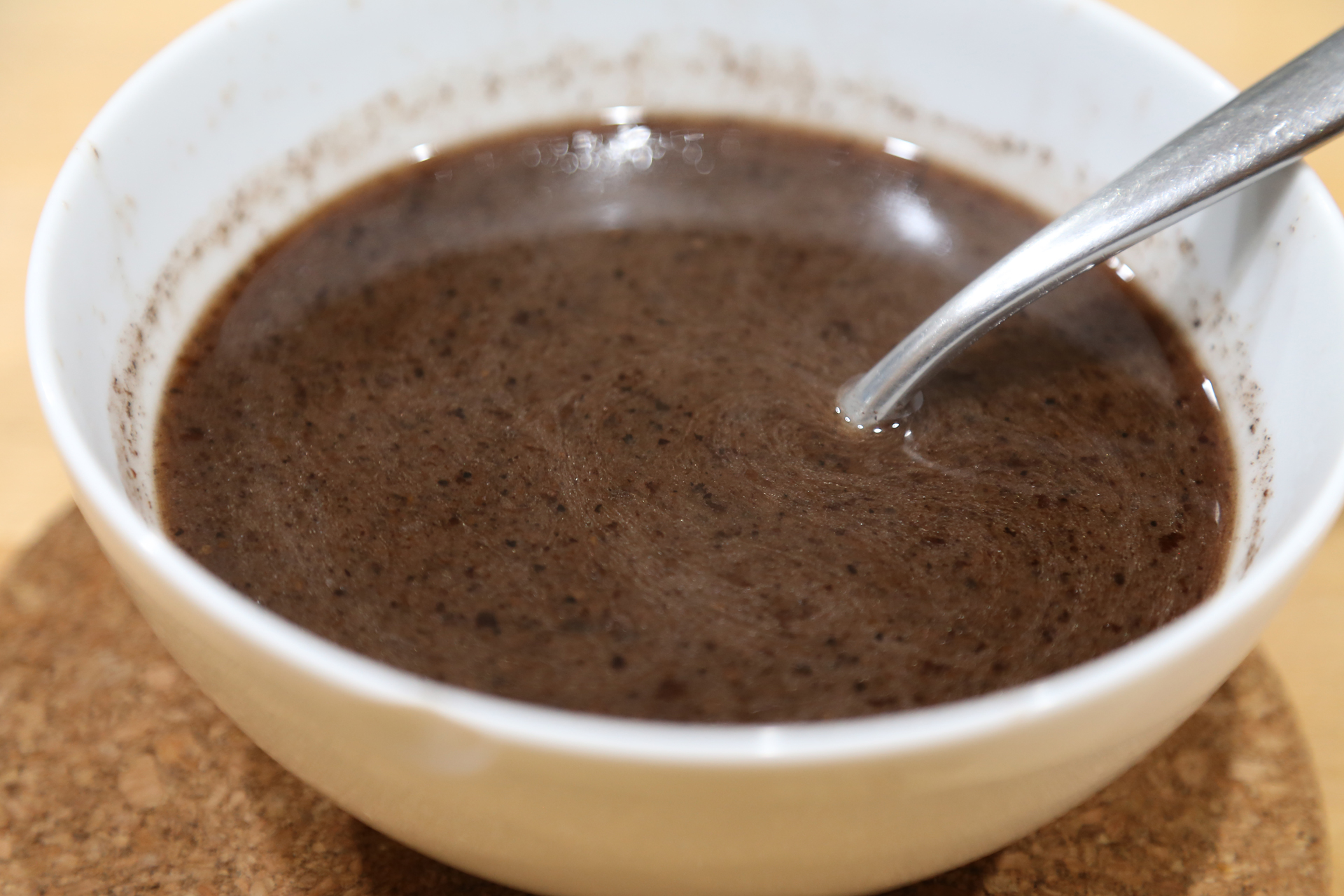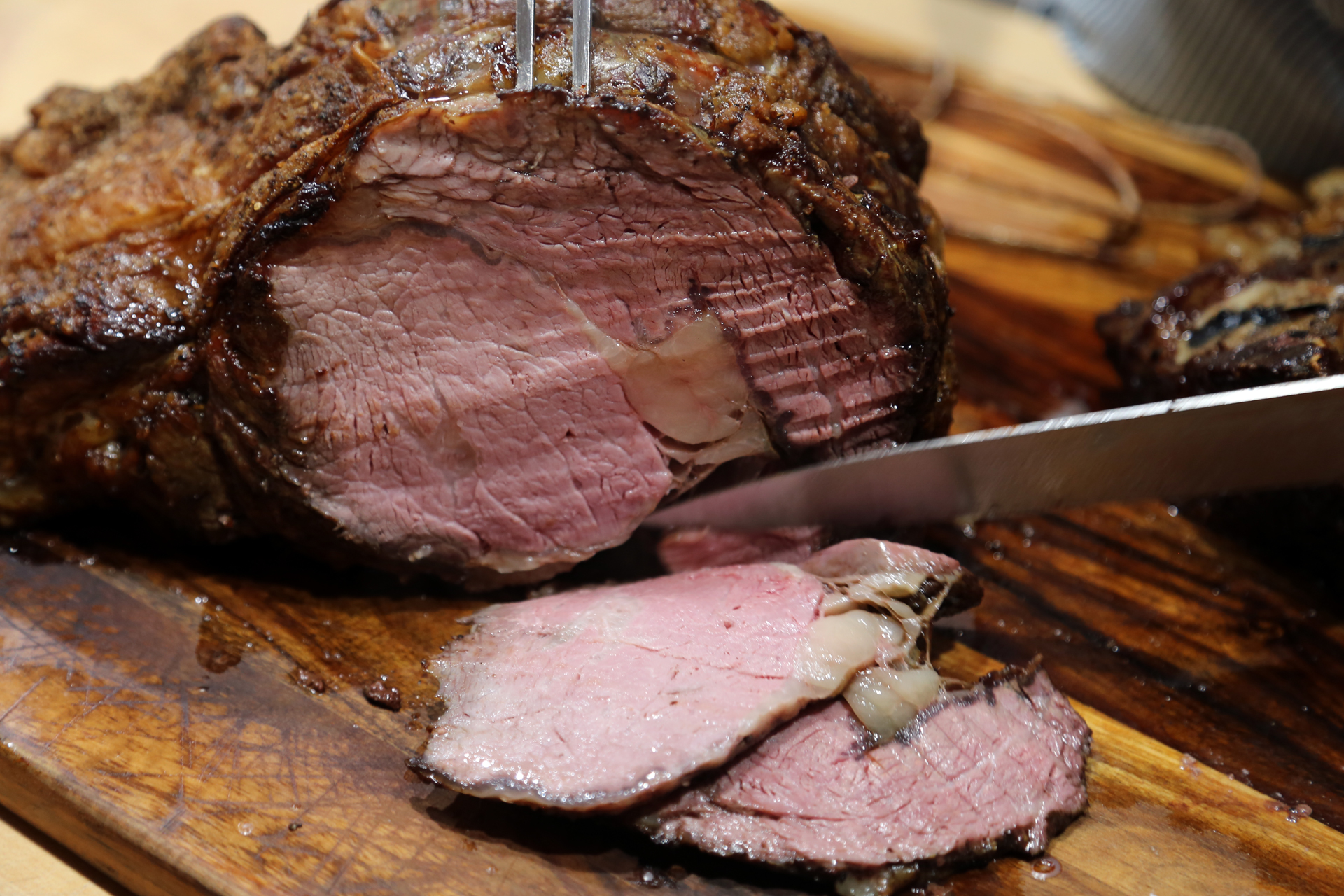Quite a few years ago, my family and I got tired of serving up yet another turkey dinner at Christmastime. I mean, Thanksgiving and Christmas are barely 4 weeks apart (sometimes more, sometimes less). Who really, truly wants to eat turkey again so soon? So my brother and I took it upon ourselves to come up with the ultimate feast. A once-a-year extravaganza of food we would never normally cook, mostly due to budget and health considerations. Say hello to the roast.
For me, one of the most elaborate things you can bestow upon your dinner party is a glorious roast. From a whole beef tenderloin to a rack of lamb, over the years we’ve served them all. I find this elaborate because I don’t normally eat a ton of meat, either regularly or in one sitting. And to serve a roast, you typically need to have quite a few guests to help you devour it (because we certainly don’t want any tiny little morsel of it to go to waste).
This year, we decided to go classic old-school: prime rib. This feeds both the Texan in me and my brother, and the Brit in my husband. To create the ultimate steakhouse dinner, make this prime rib roast with the jus (a well-seasoned, light gravy) along with the Yorkshire puddings and creamed spinach that we added to the menu this year.
Seek out the best quality roast you can find from a reputable butcher. Look for a first cut, 3-bone prime rib which gives you more meat and less fat. That being said, you want to make sure that you get a roast that has nice marbling throughout. If you really want to splurge, be sure to ask for Prime grade beef, rather than Choice which is what most supermarkets carry.
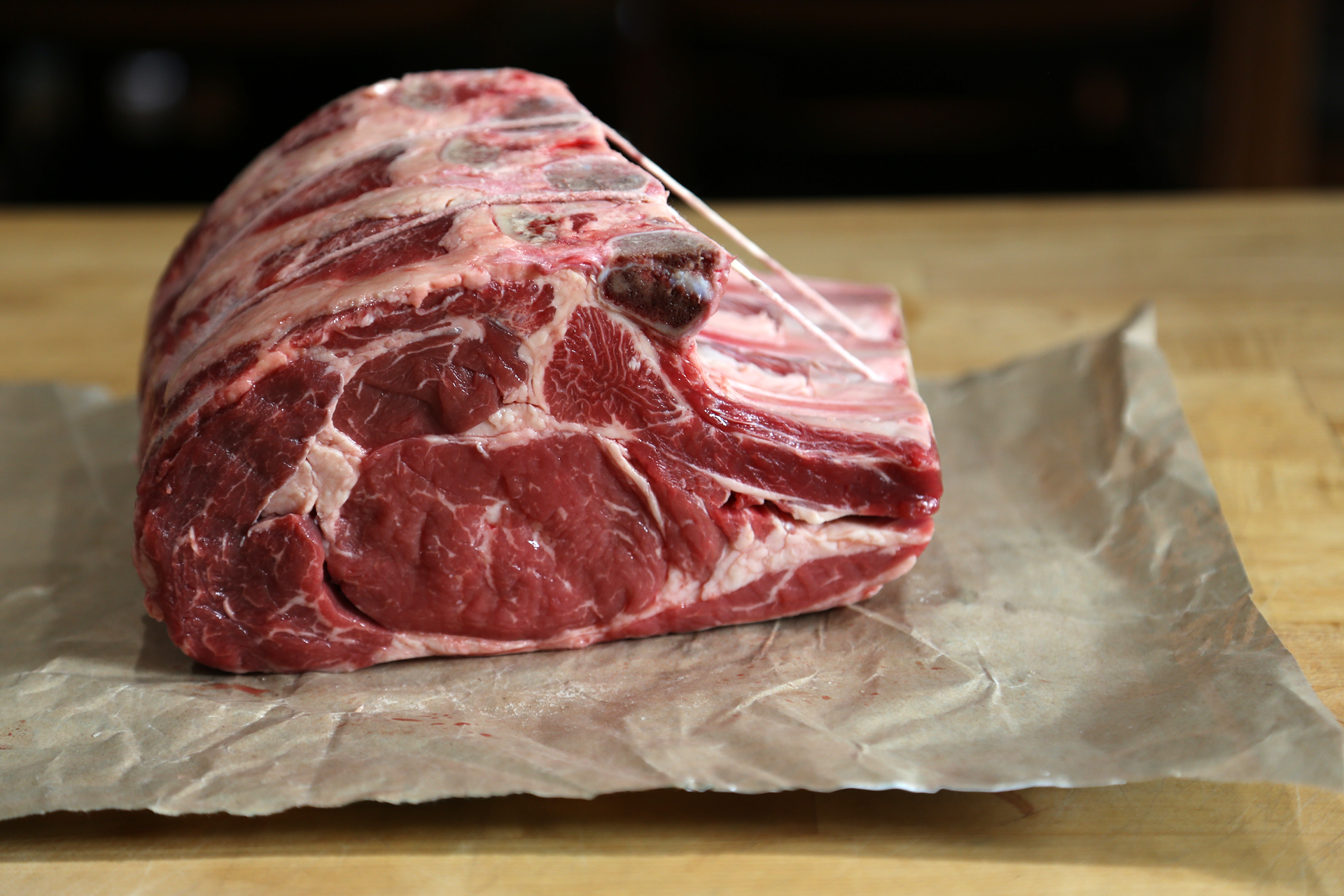
You can leave the ribs attached to the roast if you like, but to make carving easier once the roast is cooked, ask your butcher (or do it yourself!) ahead of time to cut the ribs off of the roast. Then reserve the bones, and re-attach them to the roast after browning using kitchen string or butcher’s twine. The other advantage of doing this is that it allows you to add the rib bones to the jus when finishing it before serving—another beefy layer of flavor.
Recipe: Slow-Roasted Beef Prime Rib Roast
Makes 6 to 8 servings
